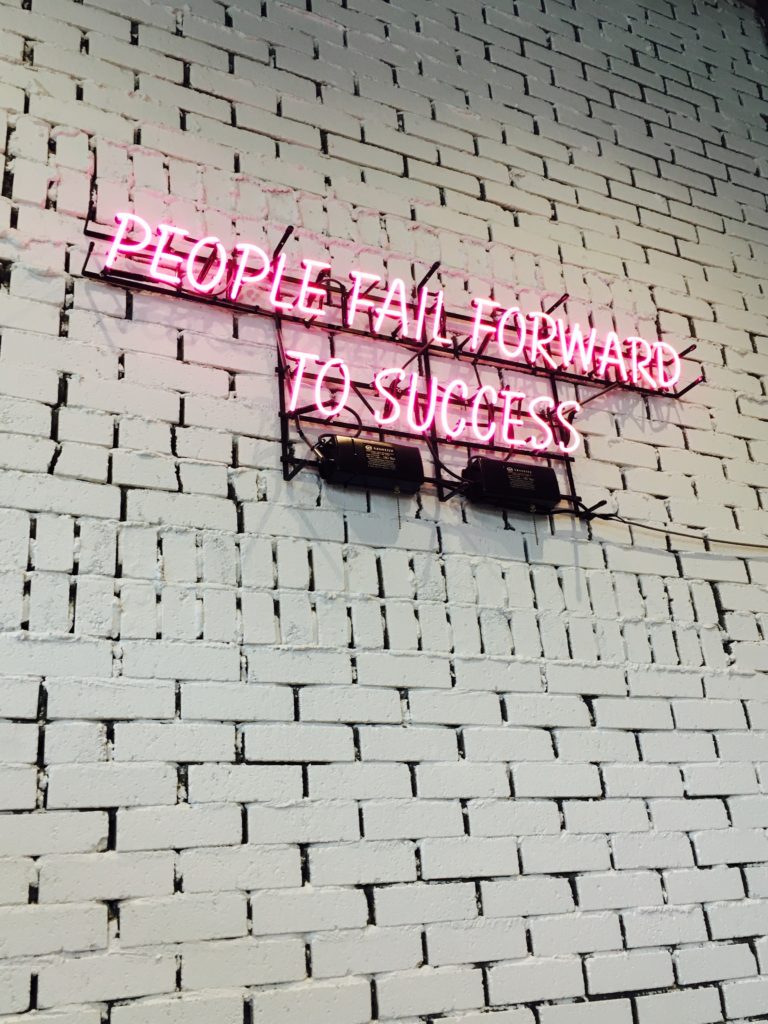I want to talk to you a little bit about failure. The exciting world of failure… yes, you read that correctly. Every once in a while, I will chat with or interact with online somebody who communicates in a way that demonstrates that they are disappointed with a certain failure.
They assume that the people that they look up to are not failing. They assume that they are failing because of something that they have not done. They assume that they are failing because of something that they’ve done wrong.
When they compare themselves to the journeys of other people in their sphere – other business people, colleagues, peers – they make am assumption that what these people put out to the world – what they talk about, what they put on social media, what they make sure everybody knows – is the real life journey of that person, rather than the highlights reel.
Failure happens all the time. Every successful person lives in a perpetual state of setting goals and not hitting those goals. No one who is on any successful journey hits every goal that they set. And if someone did, they would not be on their most successful journey because that means that they are setting their goals too low.
The Value Of Failure: Not Achieving You Goals
There is value in not clearing the bar that you have set. There are two types of people in this world:
Performance Identity. They feel good about themselves if they hit their targets and feel bad about themselves if they fail. They are depressed or overjoyed. There is no middle ground.
Their entire identity is wrapped around performance. Whether they perform well or don’t perform well; whether they get the gig or do not get the gig; whether they hit or they miss. They are completely intoxicated with their success and completely dismantled by their failures.
Growth Identity. When this person begins to experience failure, they recognise it for what it is, which is the end of their capacity. They have reached the boundaries of what they are historically capable of achieving. The only way for anyone to enlarge their capacity for achievement, to stretch out that boundary, to progress from 100,000 to 100,010 is to push through that barrier, which is going to entail struggle and failure.
This identity sees failure as an opportunity to go a couple of steps further. We learn most when we are outside our comfort zone, across that boundary.
You do not want to be caught in a Performance Identity. You do not want to assume that everyone else is hitting their targets. You do not want to assume that because you are not hitting yours there is something wrong with you.
I would flip it on it head and say that if you are hitting all your targets then you are not trying hard enough. That is a mistake. It reflects an inability to set good goals. Goals should be S.M.A.R.T.: Specific, Measurable, Aspirational, Realistic, and Time Sensitive. If you are hitting each and every one, then you are not aspiring high enough.
If you set goals to be achieved in a year and you achieve them in 3 months then that is not admirable. People, normally, over-estimate what they can do in a day and underestimate what they can achieve in a year. If you have achieved your year-long goal in three months, you have massively underachieved.
Failure is a great gift. Failure is a great teacher. Failure is a great way to stretch you boundaries, to lift the lid on your potential, to push to the next level.
See failure for what it is, the line that indicates the end of your territory. As soon as you start bumping into failure, not hitting the goals you set, that is an indicator that you have reached the edge of you comfort zone but you can push past. You can use the lessons from the failure and ultimately you can get into a more fruitful, prosperous and influential zone of living.
Fail easily. Fail early. Fail forward
Scott

